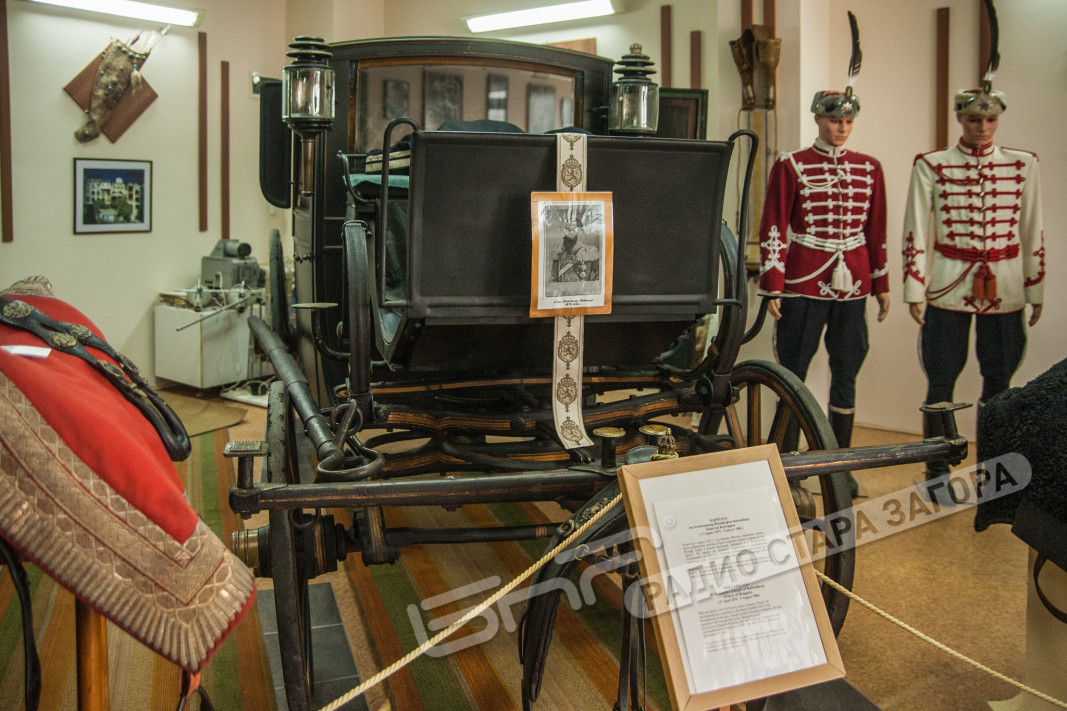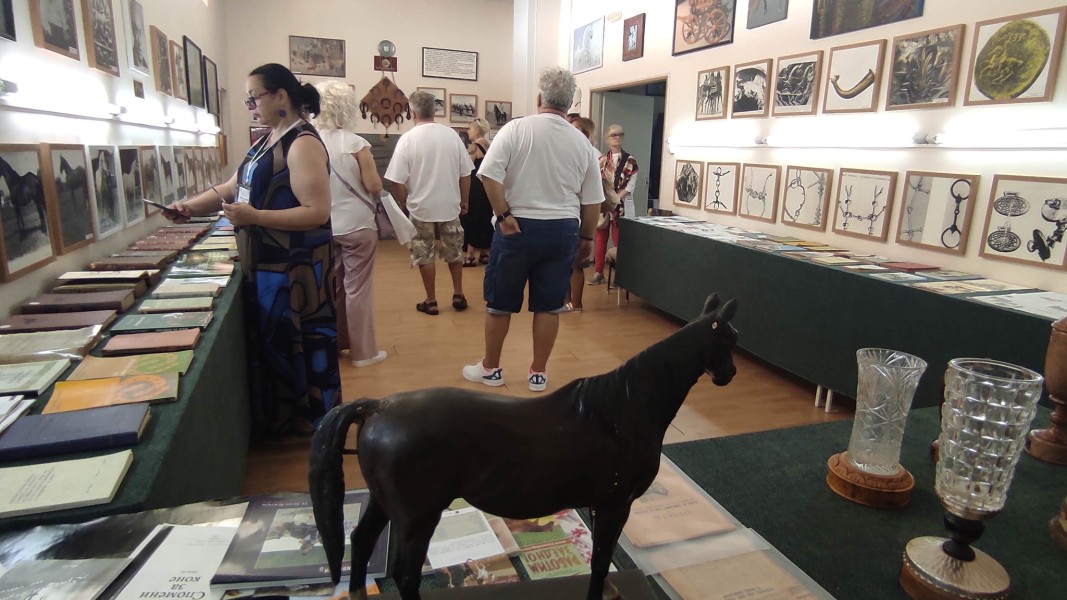As if coming out of a fairytale, the carriages of the Third Bulgarian Kingdom transport us back in time, and, maybe, to an imaginary world of childhood we all cherish. Such a journey through history is offered by the Museum of Horses and Equestrian Sports at Trakia University in Stara Zagora.
The Third Bulgarian Kingdom occupies the period between two events that have marked Bulgaria’s history in different ways – the liberation from Ottoman domination in 1878, and the occupation of the country by the Soviet troops in 1944, enforcing the socialist regime in the country. This is the period in which the new Bulgarian state was built, with individuals of aristocratic descent taking the helm. Some of the attributes demonstrating their rank and descent are on display in the museum in Stara Zagora. After the communist coup on 9 September, 1944 these attributes were dumped in what were once the royal stables where moths ate through the prince’s mourning caparison, and woodworm destroyed the material used by the French masters to make his carriage. Rescued and restored, these masterpieces crafted by carriage, barouche and buggy makers from Bulgaria and from Western Europe, can be seen at the museum which opened in 2010.
The first stopover in this virtual tour of the museum is in front of the carriage that once belonged to Prince Alexander of Battenberg, made in 1891 by a renowned Paris carriage maker, on commission by the National Assembly.
“In this carriage the mortal remains of Alexander of Battenberg were transported to the newly built museum in Sofia (in 1897),” says Stoyko Stoykov, curator of the museum. “This carriage is in the style of the 19th century, with a twin spring system, allowing for a maximum angle while taking a turn, without the carriage rolling over. We have here a mourning caparison with the prince’s monogram, original torches that first functioned using oil, then gas, a luxury interior with turquoise-coloured taffeta and ornaments made out of mother-of-pearl. All this demonstrates Alexander of Battenberg’s regal splendor.”
Next to the carriage – as if in flesh and blood – stand two guardsmen in the original uniforms, designed by the prince himself. The tradition, which goes back to Alexander of Battenberg’s personal guards, has, in our day, been given a new lease of life with the guards in front of the Presidency building. 
“The dark-red uniforms with caps lined with fur, an eagle feather, and leather boots with spurs, won first place – for their beauty and elegance – at the Balkan exposition in London,” Stoyko Stoykov says. “They were in fact cavalry uniforms because in the 19th century, the cavalry was the branch of the army with the highest prestige. The hussar tradition from Prussia with braids and galloons on the front is very reminiscent of the clothes of the April uprising.”
The next exhibit in the museum is the carriage gifted to Tsar Ferdinand by Britain’s Queen Victoria:
“The pearl in the crown of Ferdinand’s work as a statesman is the proclamation of the independence of Bulgaria from the Ottoman Empire on 22 September, 1908,” Stoyko Stoykov goes on to say. “As a result of this, Turkish Sultan Abdul Hamid II gave him a saddlecloth and riding gear with silver stirrups, inlaid with his own monogram (the co-called Sultan tughra). The saddle cloth, hand-embroidered with a metal thread, is crafted with Oriental precision and lavishness – a token of the recognition by the Turkish Sultan that Bulgaria is now independent and is embarking on its own, European path of development.”
While telling the story of the monarch, who was known, in his day, as an avid ornithologist, entomologist and dendrologist, the museum curator stops by the carriage used by Tsar Boris III and his wife Giovanna of Savoy, and then in front of the carriage which drove Prince Kyril of Preslav and Princess Eudoxia to their wedding ceremony.
“The carriage used by the prince and princess bears the name of the German town of Landau,” Stoyko Stoykov adds. “It seats 4, has a folding hood and is curved like a boat – pliable and elegant. It is low, so as to give a good view of the beautiful clothes worn by the royal persons, and also to allow them a closer contact with the people welcoming them. Its symbolic handle is a sideways 8 with a crown in the middle – a symbol of infinity and of the monarchy. Next to it is the coat of arms of the Kingdom of Bulgaria.”
The Museum of Horses and Equestrian Sports in Stara Zagora also displays the carriages and buggies made by the magnificent Bulgarian master craftsman Mito Orozov for the royal family in his workshop in Vratsa.

Visitors to the museum can also learn fascinating facts about the creation and selection of Bulgarian breeds of horses, about how horse breeding and equestrian sports have developed in the Bulgarian lands since ancient times. And they can see a photograph of the legendary Arabian stallion Moment, born and raised in Kabiyuk stud farm, sold in the 1960s in the US for half a million dollars.
Interview by Mila Marinova, BNR-Stara Zagora
Text by Diana Tsankova
Translated and posted by Milena Daynova
Photos: uni-sz.bg, Emil Enchev (BNR-Stara Zagora), Facebook /Trakia University
The 85 th anniversary since Southern Dobrudzha returned within the bounds of Bulgaria will be celebrated with an official ceremony on 1 October in Silistra, the Bulgarian news agency BTA reports. Representatives of the local and central..
Bulgarian Patriarch Daniil met with Ecumenical Patriarch Bartholomew in Thessaloniki, the Bulgarian Patriarchate announced. The two discussed the centuries-old spiritual ties between the Ecumenical Patriarchate of Constantinople and the Orthodox..
On September 22, 1908, Prince Ferdinand I proclaimed Bulgaria’s independence in a manifesto, formally establishing the Third Bulgarian Kingdom. The location was chosen with care: the Church of the Forty Martyrs in the old capital, Veliko Tarnovo,..

+359 2 9336 661
